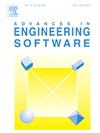汽车与三种路边障碍物碰撞时颈椎损伤
IF 5.7
2区 工程技术
Q2 COMPUTER SCIENCE, INTERDISCIPLINARY APPLICATIONS
引用次数: 0
摘要
在涉及路边障碍物的碰撞试验中,评估车辆乘客安全性的传统方法依赖于由车辆运动学响应得出的安全指标。然而,这种方法可能无法准确捕捉碰撞过程中施加在人体上的复杂生物力学应力,这引起了人们对这些指标在准确评估乘客安全方面的有效性和可靠性的担忧。本研究采用三种方法研究了三种不同类型的路边护栏对车辆乘客安全的影响:(1)基于车辆运动学的EN1317标准符合性评估;(2)利用有限元(FE)人体模型(HBM)假人和联邦机动车安全标准208标准;(3)颈椎生物力学详细检查。结合生物场FE- hbm的有限元模拟用于评估EN1317标准规定的TB32冲击条件下车辆乘客的安全性。研究结果表明,虽然所有障碍物都能有效地控制和改变车辆的方向,但混凝土障碍物造成乘员受伤的风险最高,其颈椎的安全指数和应力水平最高,由于其高横向刚度,超过了安全阈值。相比之下,电缆屏障为车辆乘客提供了最有利的条件,表现出最低的应力水平,并确保优越的安全性能。w束势垒表现为中等性能。分析还强调了乘客颈部损伤中拉伸-屈曲载荷条件的重要性。该工况占混凝土护栏颈部荷载强度的70%,占索、w梁护栏颈部荷载强度的90%,是所有颈部荷载模式中持续时间最长的。虽然目前的安全标准表明乘员受伤的风险很低,但详细的有限元分析和颈椎应力值表明,颈部可能受到伤害,特别是混凝土屏障。这些发现强调了修订现行安全标准的必要性,以包括更全面的生物力学评估,这可能导致加强道路屏障设计和改善道路安全标准。本文章由计算机程序翻译,如有差异,请以英文原文为准。
Cervical spine injuries during car collisions with three types of roadside barriers
Traditional methods for assessing vehicle passenger safety in crash tests involving roadside barriers rely on safety indices derived from vehicle kinematic responses. However, this approach may not accurately capture the complex biomechanical stresses exerted on the human body during a collision, raising concerns about the validity and reliability of these indices in accurately evaluating passenger safety. This study investigates the effects of three different types of roadside barriers on vehicle passenger safety using three approaches: (1) assessing compliance with the EN1317 standard based on vehicle kinematics; (2) utilizing the Finite Element (FE) Human Body Model (HBM) dummy and Federal Motor Vehicle Safety Standards 208 criteria; and (3) conducting detailed examinations of cervical spine biomechanics. FE simulations, incorporating a biofidelic FE-HBM, are used to evaluate vehicle passenger safety under TB32 impact conditions as specified by the EN1317 standard. The findings reveal that while all barriers effectively contain and redirect the vehicle, the concrete barrier poses the highest risk of occupant injuries, with the highest safety indices and stress levels in the cervical spine, exceeding safe thresholds due to its high lateral stiffness. In contrast, the cable barrier provides the most favorable conditions for vehicle passengers, exhibiting the lowest stress levels and ensuring superior safety performance. The W-beam barrier demonstrates intermediate performance. The analysis also highlights the significance of the tension–flexion loading condition in passenger neck injuries. This condition accounts for 70% of the neck loading intensity for the concrete barrier and 90% for the cable and W-beam barriers, lasting the longest among all neck loading modes. While current safety standards indicate a low risk of occupant injury, detailed FE analysis and cervical spine stress values suggest potential neck injuries, especially with the concrete barrier. These findings emphasize the need to revise current safety standards to include more comprehensive biomechanical evaluations, potentially leading to enhanced road barrier designs and improved road safety standards.
求助全文
通过发布文献求助,成功后即可免费获取论文全文。
去求助
来源期刊

Advances in Engineering Software
工程技术-计算机:跨学科应用
CiteScore
7.70
自引率
4.20%
发文量
169
审稿时长
37 days
期刊介绍:
The objective of this journal is to communicate recent and projected advances in computer-based engineering techniques. The fields covered include mechanical, aerospace, civil and environmental engineering, with an emphasis on research and development leading to practical problem-solving.
The scope of the journal includes:
• Innovative computational strategies and numerical algorithms for large-scale engineering problems
• Analysis and simulation techniques and systems
• Model and mesh generation
• Control of the accuracy, stability and efficiency of computational process
• Exploitation of new computing environments (eg distributed hetergeneous and collaborative computing)
• Advanced visualization techniques, virtual environments and prototyping
• Applications of AI, knowledge-based systems, computational intelligence, including fuzzy logic, neural networks and evolutionary computations
• Application of object-oriented technology to engineering problems
• Intelligent human computer interfaces
• Design automation, multidisciplinary design and optimization
• CAD, CAE and integrated process and product development systems
• Quality and reliability.
 求助内容:
求助内容: 应助结果提醒方式:
应助结果提醒方式:


